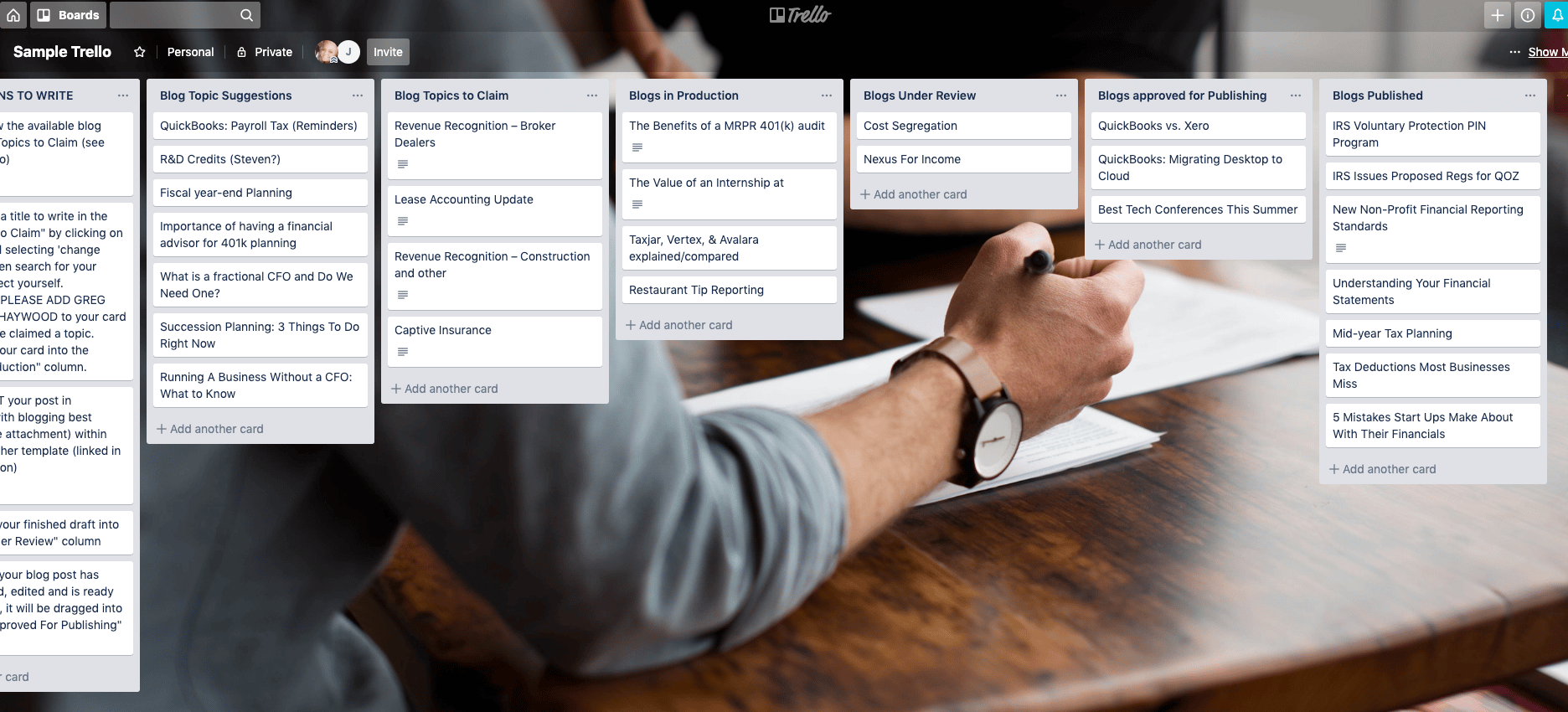
So, you read part 1 of this blog series and now you are PUMPED to start creating a B2B blog for your manufacturing or industrial subcontracting company.
Yet, we understand that it can seem daunting to actually create that blog. Here are tips to help you get your B2B blog started, optimize it, promote it, and measure its success.
How To Get Started B2B Blogging
Here are some steps to get that blog going:
1.Decide Who’s Doing It
You have two options:
- You and your team start a dedicated blog team in-house, which may include freelancers that are on-boarded to understand your business.
- You collaborate with a marketing agency (like us) – we’ll do subject matter expert interviews and write for you or just edit a brain dump from you or your SME’s and then shape it into a proper blog post.
WARNING: We do not recommend that you ‘farm it out’ to a freelance content mill. The writing might be fine but it is unlikely that they will think strategically for you, which may result in posts that don’t fit within your overall content strategy, your voice and tone, or your brand.
2.Hold A Brainstorm
Whether you decide #1 or #2 from above, your team should take part in a content brainstorm. If you partner with an agency, they should include you and get ideas from your team because you are the experts.
Start generating blog ideas from the most frequently asked questions of your sales team, or the biggest pain points facing your customers. Think about what they’re typing into Google and answer those questions.
3.Get Organized
Once you have decided on themes for the content on your blog – even some specific post ideas – organize your blog and your team by setting up an editorial calendar.
Create a Trello Board to assign tasks or blog topics to team members topics, and even manage the workflow of blog concept to published article.

4.Welcome Guest Bloggers
Invite people to write for you. You can take some of the load off your team by welcoming your own customers, clients, and industry peers that are non-competitors to write or collaborate on blog posts.
5.Keep Blogging Best Practices In Mind
Here are a few blogging best practices to keep in mind when you start to write your blog posts:
- Ask your customers what they want to read about
- Use non-branded keywords so your blog is found in Google search
- Measure your blog performance
- Connect your blog with your website – Hosting your blog can be easy with tools like Hubspot, or you can host using WordPress or other platforms.
Pro tip: Headlines are the most important part of a blog. Make sure you are using relevant keywords in your headlines, which search engines will pick up when they crawl your post.
Frequency and Length of Blogging
Start out by blogging twice a month. Quality of the posts is more important than quantity of the posts. You should have posts of varying length. Write a few 500 to 800 word posts, and a few posts between 1,000-2,000 words. If you have the resources for a weekly blog eventually, that’s a great frequency!
Optimizing Your Blog Post
When you start a blog, make sure you are consistent and you follow the typical anatomy of a B2B Blog Post:
- Introduction
- Headers and Sub-headers
- External links to reputable articles and internal links to your website or blog posts
- Calls-to-Action (CTAs)
- Featured images
- Embedded videos
- Summary at the end
- Next Steps – give your users ideas of other relevant blog posts they should read or content offers they should download.
Pro Tip: Make your posts scannable. Formatting is key. Use short paragraphs and bulleted lists – Like above.
Search Engine Optimization
Your blog needs to be optimized for search engines like Google.
Meta descriptions are the short preview text you see under Page titles in Google Search. Like this:

Make sure your blog has a unique meta description that is 156 characters or less, a title that is 39 characters or less, and that each uses relevant keywords. Use tools like SEOmofo’s Google SERP Snippet Optimization Tool to preview your meta and title and make sure they aren’t too short or too long.
Pro Tip: HubSpot makes it easy to create meta descriptions and include them in your blogging process.
And don’t neglect your images! Your images need Alt text – which Google scans to determine the content of your images. It is also helpful for visitors with visual impairments.
Optimize for Lead Generation
Use Calls-To-Action (or buttons) that encourage users to download a content offer and give you their email address. Just make sure the offer you are promoting is relevant to the blog post, and don’t clutter the post with a bunch of CTAs.
Use CTAs like:
- Subscribe to our blog!
- Download our offer!
- Ask for a free consultation!
- Try a product Demo!
Pro Tip: Your blog is a not a sales tool. It’s an educational tool for your customers who are doing research. Don’t sell. Educate.
Promote and Measure Your Business Blog
After you start building your blog, you have to promote it to get your ideal customers’ eyes on it. It’s not a Field of Dreams kind of thing.
FIRST – Make sure your blog is connected to your website and easy to find in your site navigation.
THEN – Promote your blog with emails, social media posts, and click to share buttons.
Pro Tip: marketing automation tools make this super easy with automatic blog subscription emails and social posts.
ALWAYS – Measure the performance of your blog with metrics. At the very least, make sure your blog is connected to Google Analytics and that you are checking monthly or quarterly (or both!) on the performance of your blog. Then update poorly performing blogs and take notes on what types of blogs are bringing in the most traffic.
Get Help Building Your Industrial B2B Blog
If you have any questions or want help getting started, contact us and chat with our team on how to get your B2B blog started.
Or take a look at our Ultimate Guide to Digital Marketing for Manufacturers to learn more about industrial marketing and blogging.
Get the latest news
Blog Topics
- Analytics
- Branding & Identity
- Budget
- Construction
- Content Marketing
- Conversion Rate Optimization
- Email Marketing
- HubSpot
- Inbound Marketing
- Lead Generation
- Marketing Strategy
- News/Events
- Paid Search & PPC
- Recruiting
- Sales & Marketing
- Sales Enablement
- Search Engine Marketing
- Search Engine Optimization
- Social Media
- Thought Leadership
- Uncategorized
- Usability
- Video Marketing
- Web Hosting
- Website Design
